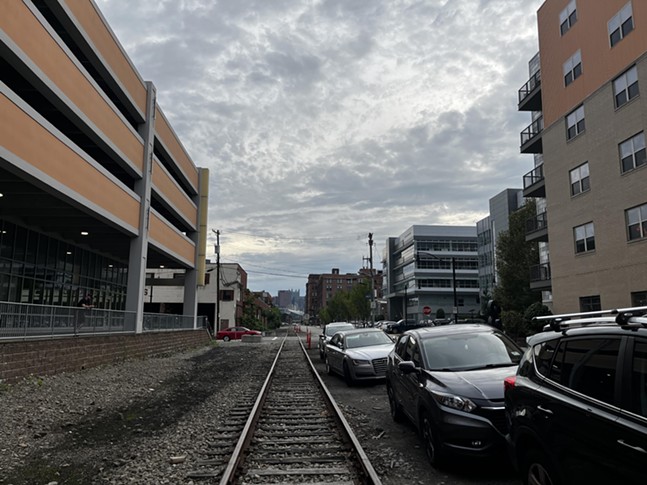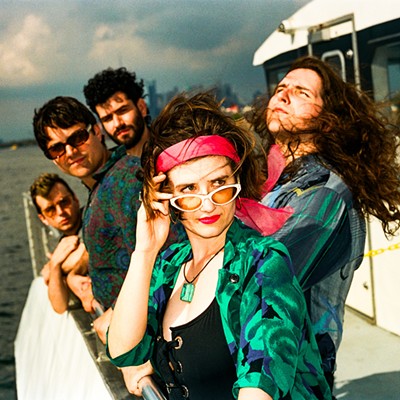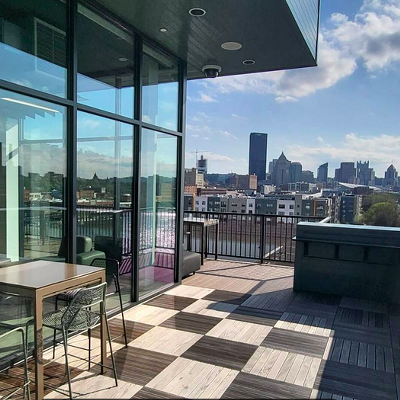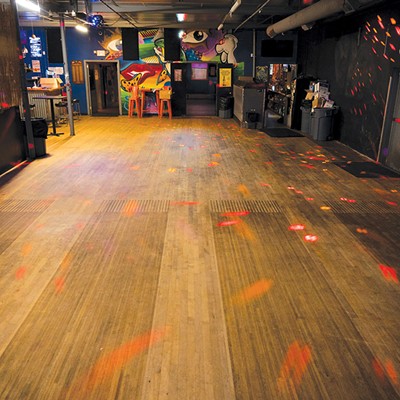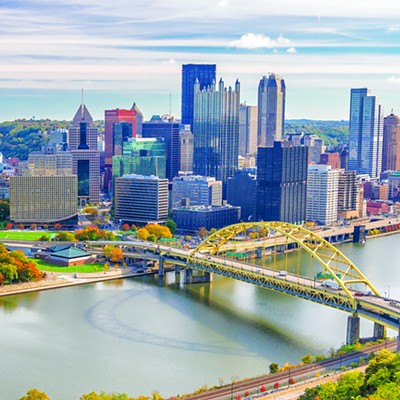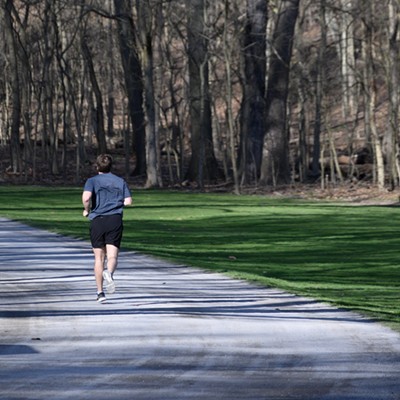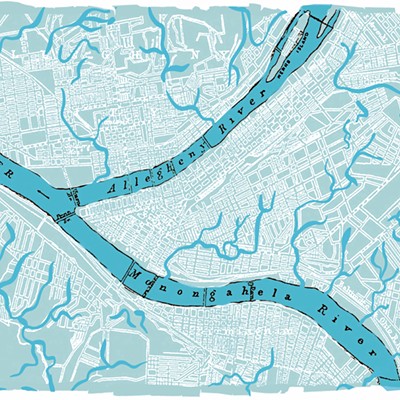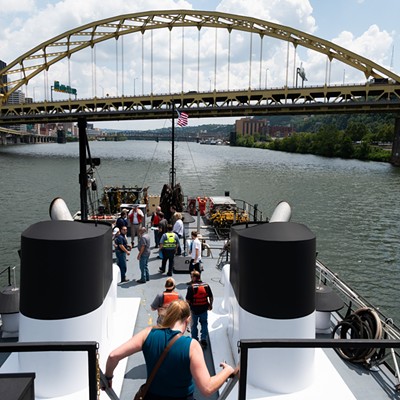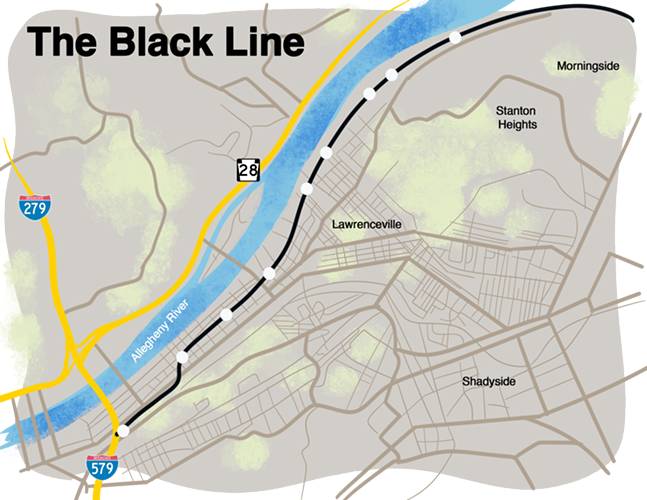
Railroad St. in the Strip District follows a neglected line of the Allegheny Valley Railroad parallel to the lively Smallman St. corridor. Along its one side, there's a generous space that could accommodate parallel trolley tracks. I've been looking at these tracks for years and yearning for them to become the starting point of Pittsburgh's next great trolley era.
The plan makes almost too much sense — with the Strip District growing, Lawrenceville in its prime, and existing trolley infrastructure in place near Penn Station, what I'll call the "Black Line" would be well-positioned to become the second-most used public transit corridor after the MLK Jr. East Busway. The color is just a suggestion based on black's role in our civic and sports identity, and it isn't currently used by PRT, unlike purple, green, orange, red, blue, and silver. (A Gold Line could follow later, or the South Busway, currently coded yellow on maps, could be renamed in this scenario.)
Trolleys have a long history in our city. They were the main mode of transit for many Pittsburghers until the 1970s, and they're still indispensable for South Hills commuters. However, the T as it currently exists offers little for tourists who want venture beyond Downtown, Station Square, and the North Shore.
A line connecting to the Strip District and Lawrenceville would change that. Both neighborhoods have abundant food, drink, lodging, and landmarks. They also both suffer from an overabundance of traffic along narrow, two-lane streets.
The Black Line would take pressure off of Butler St. and Penn Ave. parking and give partiers an easier way to get from Over Eden to Tequila Cowboy or from the Buccos to bedtime. An easy transfer in Station Square or Downtown would also give South Hills residents a car-free way to get farther into town — for commuters used to sitting in traffic along Banksville Rd. or Sawmill Run Blvd., zipping through Dormont and Beechview en route to a night at the Benedum would save time, money, and stress.
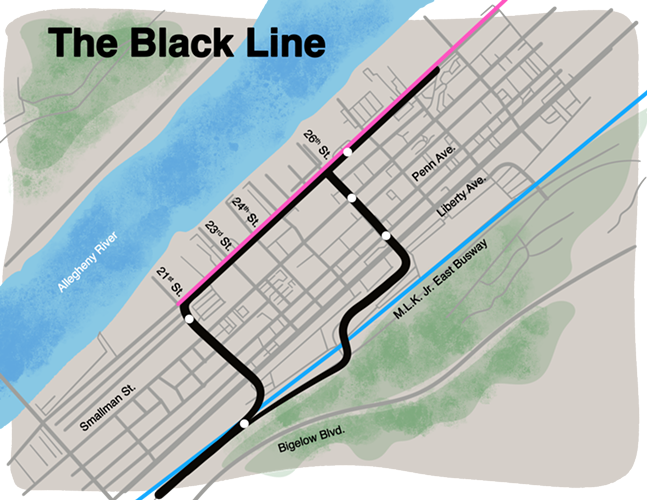
Meanwhile, farther down the line, a spur could connect tourists with the Pittsburgh Zoo & Aquarium. This would benefit Highland Park and Morningside Residents, visiting families, and the long-buried Heth's Run stream by taking pressure off of the zoo's massive parking lots. Indeed, a stream daylighting project could even be built into such an extension for an additional couple million bucks.
Longer-term, PRT would also have the option to reevaluate the structure of T lines for maximum efficiency. A popular line in Lawrenceville, paired with dormant plans for an extension through Manchester, could be a massive step toward activating the Esplanade development or resurrecting the lost Beaver Ave. business corridor under Pa. 65, eventually paving the way for a commuter line along the Ohio Valley.
To my mind, the only drawbacks to this plan are fairly obvious. Cost is the first one. Light rail is far more expensive than busways, though it can be more efficient and environmentally friendly. This would likely be an extremely expensive undertaking for a transit agency struggling to recover from COVID and the end of accompanying stimulus funds.
The other issue is that the Allegheny Valley Railroad has been slow to warm to green infrastructure projects. However, local authorities have successfully worked with the railroad on similar projects such as the Brilliant Line, and anyway, most of the track along Railroad St. is barely used.
Picture it: you walk down from your room at the Tryp Hotel and around the corner to the 40th St. station. A Black Line train, perhaps wrapped in a Clemente or Stargell decal, picks you up and whisks you along what used to be an industrial corridor to lunch at Cinderlands. Then, after an exciting trip over the new Liberty Ave. flyover, your Black Line trolley carries you through the city's bustling subway to a packed Acrisure Stadium. Whatever your night holds, the T is there to take you back safe and sound, and all you've spent on transit that day is $7 for a PRT day pass.
I'm a simple person, and I'm asking for a simple thing: give me more trolleys! If you build it, I will ride. Just don't get me started on how well this would tie in with a Three Rivers water taxi…

